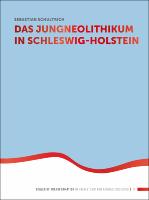Das Jungneolithikum in Schleswig-Holstein
| dc.contributor.author | Schultrich, Sebastian | |
| dc.date.accessioned | 2021-10-06T11:56:10Z | |
| dc.date.available | 2021-10-06T11:56:10Z | |
| dc.date.issued | 2018 | |
| dc.identifier | ONIX_20211006_9789088907425_32 | |
| dc.identifier | OCN: 1091190882 | |
| dc.identifier.issn | 2590-1222 | |
| dc.identifier.uri | https://library.oapen.org/handle/20.500.12657/50796 | |
| dc.language | German | |
| dc.relation.ispartofseries | Scales of Transformation | |
| dc.subject.classification | thema EDItEUR::N History and Archaeology::NK Archaeology::NKD Archaeology by period / region | en_US |
| dc.subject.classification | thema EDItEUR::3 Time period qualifiers::3B Prehistory | en_US |
| dc.subject.other | Late Neolithic | |
| dc.subject.other | Single Grave Culture | |
| dc.subject.other | Corded Ware Culture | |
| dc.subject.other | transformation | |
| dc.subject.other | solid stone axe | |
| dc.subject.other | battle axe | |
| dc.subject.other | fragments of axes | |
| dc.title | Das Jungneolithikum in Schleswig-Holstein | |
| dc.type | book | |
| oapen.abstract.otherlanguage | This book offers a comprehensive study of the Younger Neolithic period ([YN], c. 2850 – 2250 BC) of Schleswig-Holstein (SH). Apart from presenting all currently known artefacts and contexts of that period in detail, a particular focus was placed on the examination of YN battle axes. They appear to be the most common artefact that is preserved from the YN, and they are very well suited for investigating social phenomena. These artefacts furthermore changed diachronically. While battle axes of the early stage are shaped more or less equally elaborately, late specimens exhibit significant morphological variation and difference, as some specimens were shaped very elaborately whereas others were quite simple. The same difference has been observed for the subsequently used flint daggers. It is suggested that this difference reflects the emergence of a more stratified society. Many battle axes appear to have been deposited as broken pieces. As the ratio of cutting edges to butt ends is unequal (2:1) both in SH and in a wider region and as many pieces have “decorations” (Applikationen, pars pro toto shaft holes), battle axes are regarded as intentionally deposited. Accordingly, a large proportion of single finds are regarded as intentional depositions. Another focus was set on examining the transition to the YN. It is argued that many aspects that are said to characterize the YN are rooted in the preceding Middle Neolithic. A novelty is that social role becomes marked in funerary contexts. Thus, the transformation to the YN marks a certain point where already initiated societal changes become visible for first time. The examination of certain attributes revealed furthermore that there are differences between western and eastern SH which are not determined by chronological changes only. Rather, general differences appear between western and eastern regions, an in a wider geographical as well as temporal frame, which might be linked to different social orientations – either collectively or individually acting groups. | |
| oapen.relation.isPublishedBy | 471fd6d5-f295-4fd0-a13a-e60a6420f603 | |
| oapen.relation.isbn | 9789088907425 | |
| oapen.relation.isbn | 9789088907432 | |
| oapen.relation.isbn | 9789088907449 | |
| oapen.imprint | Sidestone Press Academics | |
| oapen.series.number | 1 | |
| oapen.pages | 506 | |
| oapen.place.publication | Leiden |

